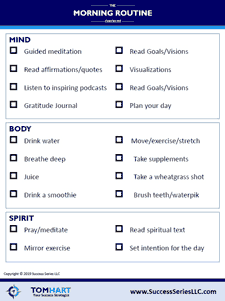#GrowYourLife #BuildYourBusiness
Life Area: Professional | Topic: Freelancing
3 Things You Need to Know Before Going Freelance
Being a salaried employee means having the stability of a steady paycheck. It also means having to answer to a boss, and, in many cases, adhere to what could be a pretty rigid work schedule. It’s no wonder, then, that a large number of workers contemplate going freelance each year.
Now there are plenty of good reasons to become self-employed. You get to be your own boss, set your own schedule, and take on projects that are interesting or meaningful to you. That said, there are certain financial implications of going freelance you’ll need to account for when making the leap. Here are three in particular to know:
Going freelance could end up being the most rewarding career decision you’ll make in your life.
1. You’ll be liable for self-employment taxes
When you’re a salaried employee, taxes are taken out of your paychecks so that you don’t have to worry about paying the IRS its share of your earnings. Not so when you’re freelance. Independent contractors are liable for self-employment taxes, and those taxes are due to the IRS on a quarterly basis throughout the year. Not only must you pay those taxes on time as a freelancer, but it’s on you to calculate how much you owe (or get an accountant to do it for you).
Of course, Social Security is only part of the self-employment tax picture. There are Medicare taxes you’ll also be responsible for, and unlike Social Security, there’s no income cap. This means that as a freelancer, you’ll pay a 2.9% Medicare tax on all of your earnings.
The good news in all of this is that you can deduct half of your self-employment taxes when you file your tax return. The bad news is that you’ll need to come up with that money up front, so prepare for that major expense.
2. You can still save for retirement in a tax-advantaged plan
Many freelancers are quick to assume that they can’t save for retirement in a tax-advantaged manner, but actually, there are several options available to self-employed workers that salaried employees don’t get access to. If you’re a freelancer without employees, one option you might consider is the SEP IRA. Short for simplified employee pension, a SEP IRA lets you contribute up to 25% of your net business earnings (your earnings minus your business expenses, SEP contribution, and half of your self-employment taxes. If you employ other people, saving in a SEP can get expensive because you must contribute the same amount to your workers’ accounts, percentage-wise, that you put into your own plan. But if you don’t have employees, this isn’t an issue.
Another option you might consider is the SIMPLE IRA. Short for savings incentive match plan for employees, SIMPLE IRAs let you contribute up to $13,500 in 2020 if you’re under 50, or $16,500 if you’re 50 or older. If you employ other people, you must offer matching contributions for their accounts to a certain degree, though you don’t have to contribute the same amount, percentage-wise, that you do to your own account. And if you’re self-employed, you can fund your own account as both an employer and employee.
Finally, there’s the Solo 401(k), which works similarly to employer-sponsored 401(k)s aside from the fact that you manage your plan yourself. Another key difference? Solo 401(k)s offer much higher contribution limits than traditional 401(k)s. In 2019, you’ll have the option to contribute up to 25% of your self-employment income for a maximum of $57,000 if you’re under 50, or $63,500 if you’re 50 or older.
3. You’ll need healthy emergency savings
A good 25% of freelancers actively worry about job security. And while salaried employees can easily fall victim to layoffs, there’s generally a bit more stability associated with that sort of arrangement than there is in the freelance world. That’s why if you’re going to go freelance next year, you’ll need a robust emergency fund first.
Ideally, that fund should have enough money to cover about six months’ worth of living expenses. For salaried workers, that threshold can be a bit lower, but since self-employed individuals often experience bouts of slowness on the workflow front, it pays to have an added cushion if you’re looking to work for yourself. Even if you secure a steady stream of work, you might find that some (or many) of your clients aren’t so vigilant about paying you for that work in a timely fashion, which is why you’ll need plenty of cash reserves.
Going freelance could end up being the most rewarding career decision you’ll make in your life. Keep these points in mind if you think you’ll make the transition next year so that you set yourself up for a financially sound 2021.
Please share this post with your family and friends.
 My mission is to inspire people and organizations to live their highest vision.
My mission is to inspire people and organizations to live their highest vision.
I am a Success Strategist and Master Coach. I provide transformational coaching and training for individuals and organizations to help you Grow Your Life and Build Your Business by getting clear and focused on what you want, why you want it, and how to create it. Learn more about me at SuccessSeriesLLC.com.
There is no better endorsement than that of a friend, so if you like what you’re reading or are using my many FREE resources, tell a friend to join the Tom Hart Success Series Community, to receive email notifications of new blog posts and Talk with Tom podcast episodes, learn of upcoming events, and other news, by visiting my website and clicking on the offer to receive my FREE monthly resource by leaving their email address OR forward this to them and have them simply click here (we respect your privacy and do not tolerate spam and will never sell, rent, lease or give away your information to any third party).



